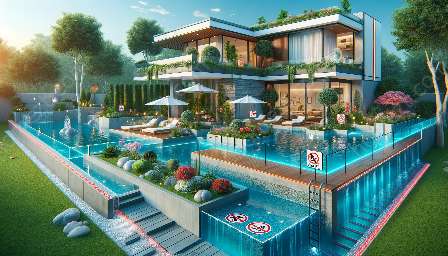In the context of spa safety and swimming pools, ensuring proper ventilation and maintaining good air quality are crucial for the health and well-being of guests. This comprehensive guide will explore the importance of ventilation systems, air quality standards, and best practices to maintain a safe and enjoyable environment.
The Importance of Ventilation and Air Quality in Spa Safety
When it comes to spa safety, ventilation and air quality play significant roles. Proper ventilation helps to remove excess moisture, odors, and pollutants from the air, creating a comfortable and healthy environment for spa guests. It also helps to prevent the buildup of harmful substances, such as mold and mildew, which can negatively impact air quality and pose health risks. Additionally, maintaining good air quality is essential for preventing the spread of airborne illnesses and providing a rejuvenating experience for guests.
Understanding Ventilation Systems
Ventilation systems in spas and swimming pools are designed to exchange indoor air with fresh outdoor air while removing pollutants and controlling humidity levels. Properly designed and maintained ventilation systems help to mitigate the buildup of harmful substances, regulate temperature and humidity, and ensure a pleasant experience for guests. It is essential to have a comprehensive understanding of the different types of ventilation systems and their specific requirements for spa and swimming pool environments.
Regulatory Standards for Air Quality
Regulatory bodies such as health departments and environmental agencies have established standards for air quality in public spaces, including spas and swimming pools. These standards address factors such as air circulation, filtration, and the control of pollutants to maintain a healthy indoor environment. Compliance with these standards is essential for ensuring the safety and well-being of spa guests and maintaining a positive reputation for the establishment.
Best Practices for Maintaining Good Air Quality
Implementing best practices for maintaining good air quality involves a multi-faceted approach. This may include regular maintenance of ventilation systems, proper filtration of air, monitoring of indoor air quality, and using appropriate air purification technologies. Additionally, promoting good hygiene practices among staff and guests, such as proper waste disposal and regular cleaning, contributes to overall air quality in spa and swimming pool settings.
Conclusion
In conclusion, ventilation and air quality are indispensable components of spa safety and the overall guest experience in swimming pools. By prioritizing the design, maintenance, and compliance with air quality standards, spa and swimming pool operators can create a safe, healthy, and enjoyable environment for their guests. It is imperative to stay informed about best practices and advancements in ventilation and air quality technologies to uphold the highest standards of safety and comfort.


